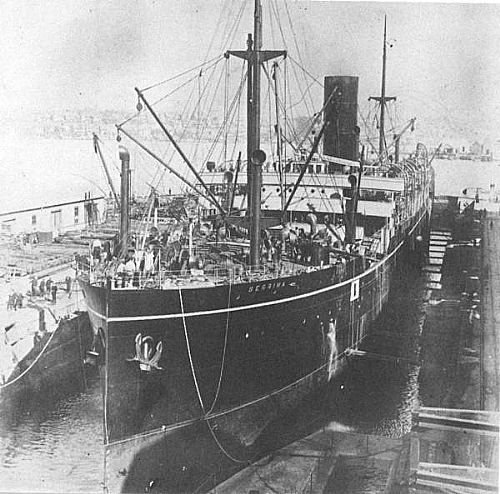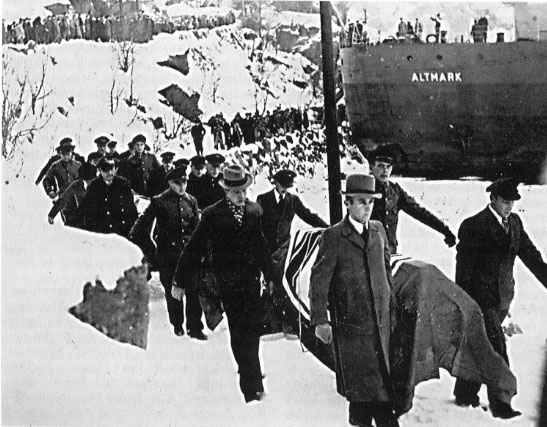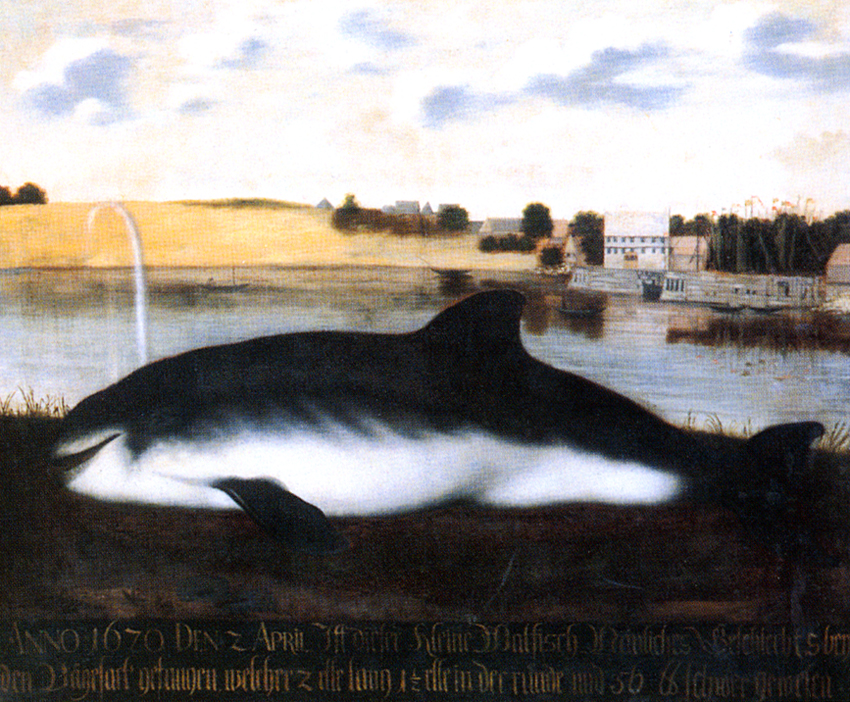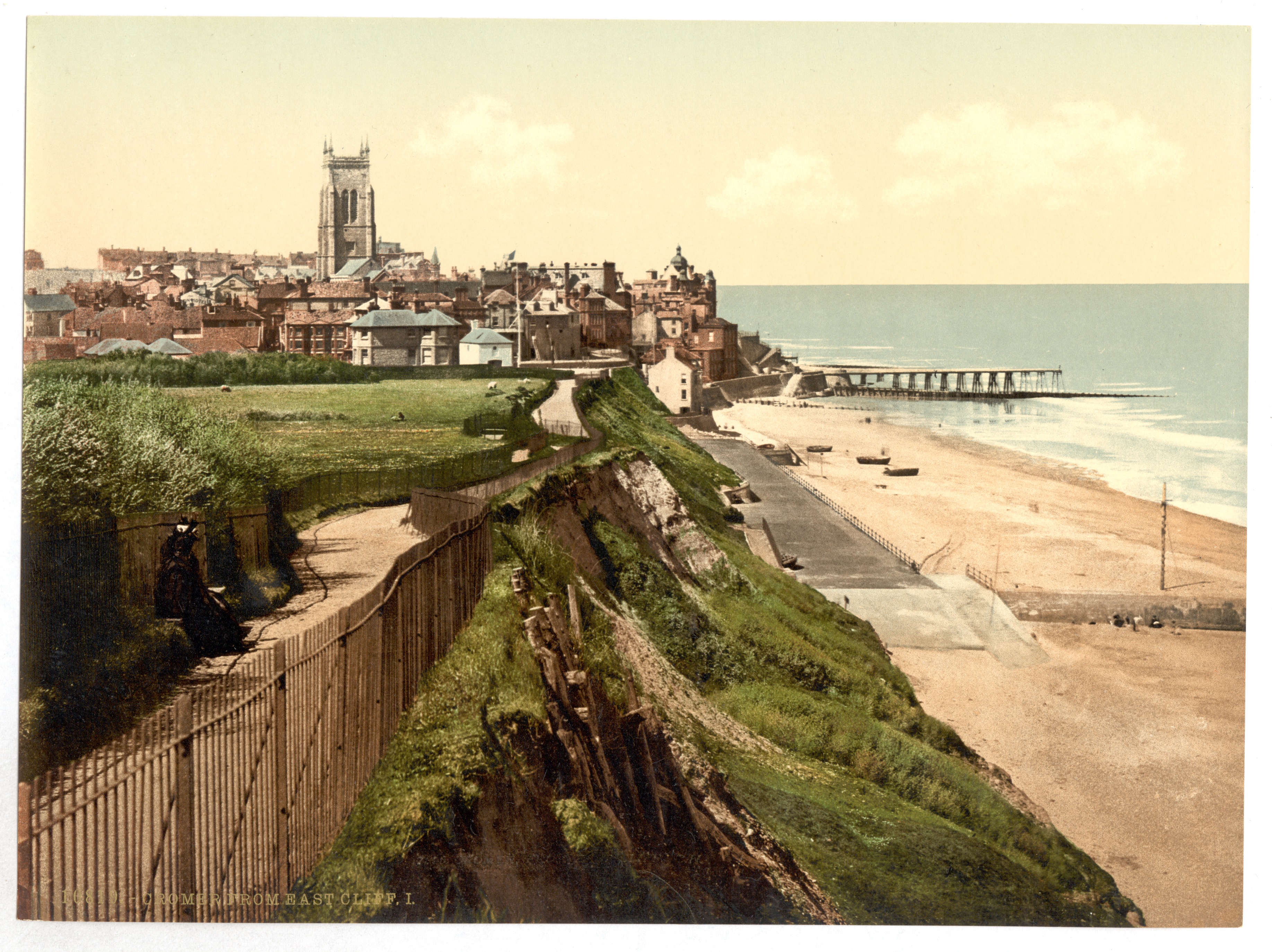|
SS Main
Several steamships have borne the name ''Main'': * was a 3,087-ton single-screw ocean liner built in 1868 by Caird & Co., Greenock. New compound engines fitted in 1878. Owned 1868–1891 by the Norddeutscher Lloyd and 1891–1892 by the Anglo-American Steamship Co. On 23 March 1892, while on voyage from New Orleans to Liverpool with cattle and general cargo, destroyed by a fire at Prim Bay, Fayal, in the Azores and left to disintegrate. * was a 715-ton cargo ship launched on 28 April 1904, by Mackie & Thomson in Govan, Scotland. Sold and renamed ''Marden'' in 1926, sunk in collision with ''The Sultan'' off Cromer Knoll on 27 May 1929. * was a 2,662-ton cargo ship launched as ''Regina'' on 13 December 1906, by Flensburger Schiffbau-Gesellschaft in Flensburg, Germany. Sold and renamed ''Maria'' in 1921, sold again in 1924 and renamed ''Main''. Finally resold in 1927 and renamed ''Milos''. Struck a mine and sank off Kristiansand, Norway on 20 October 1944. * was a 964-ton cargo ... [...More Info...] [...Related Items...] OR: [Wikipedia] [Google] [Baidu] |
Caird %26 Company
Caird & Company was a Scottish shipbuilding and engineering firm based in Greenock. The company was established in 1828 by John Caird when he received an order to re-engine Clyde paddle-tugs. John's relative James Tennant Caird joined the company in 1831, and after leaving to work for Randolph, Elder & Co in Glasgow, rejoined the family business for good in 1838. A year after the death of Robert Caird, the company was sold to Harland & Wolff Ltd in 1916 for £432,493. The firm continued trading as a separate enterprise, with Arthur and Patrick Caird on the board, until 1922. The Arthur Street engine works was sold to John G. Kincaid & Company in 1919. Ships fitted with engines by Caird & Co In the early years Caird & Co were responsible for fitting (or re-fitting) steam engines in ships. An example of this is the ''Glasgow'' fitted with a side-lever engine by Caird & Co in 1828 for G & J Burns. This being an engine running on only 5psi steam pressure, as was common at the t ... [...More Info...] [...Related Items...] OR: [Wikipedia] [Google] [Baidu] |
Kristiansand
Kristiansand is a seaside resort city and Municipalities of Norway, municipality in Agder county, Norway. The city is the fifth-largest and the municipality the sixth-largest in Norway, with a population of around 112,000 as of January 2020, following the incorporation of the municipalities of Søgne and Songdalen into the greater Kristiansand municipality. In addition to the city itself, Statistics Norway counts four other densely populated areas in the municipality: Skålevik in Flekkerøy with a population of 3,526 in the Vågsbygd borough, Strai with a population of 1,636 in the Grim borough, Justvik with a population of 1,803 in the Lund borough, and Tveit with a population of 1,396 () in the Oddernes borough. Kristiansand is divided into five boroughs: Grim, Vest-Agder, Grim, which is located northwest in Kristiansand with a population of 15,000; Kvadraturen (Kristiansand), Kvadraturen, which is the centre and downtown Kristiansand with a population of 5,200; Lund, Kristia ... [...More Info...] [...Related Items...] OR: [Wikipedia] [Google] [Baidu] |
Operation Weserübung
Operation Weserübung (german: Unternehmen Weserübung , , 9 April – 10 June 1940) was Germany's assault on Denmark and Norway during the Second World War and the opening operation of the Norwegian Campaign. In the early morning of 9 April 1940 (''Wesertag'', "Weser Day"), Germany occupied Denmark and invaded Norway, ostensibly as a preventive manoeuvre against a planned, and openly discussed, French-British occupation of Norway known as Plan R 4 (actually developed as a response to any German aggression against Norway). After the occupation of Denmark (the Danish military was ordered to stand down as Denmark did not declare war with Germany), envoys of the Germans informed the governments of Denmark and Norway that the ''Wehrmacht'' had come to protect the countries' neutrality against Franco-British aggression. Significant differences in geography, location and climate between the two nations made the actual military operations very dissimilar. The invasion fleet's n ... [...More Info...] [...Related Items...] OR: [Wikipedia] [Google] [Baidu] |
Kriegsmarine
The (, ) was the navy of Germany from 1935 to 1945. It superseded the Imperial German Navy of the German Empire (1871–1918) and the inter-war (1919–1935) of the Weimar Republic. The was one of three official branches, along with the and the , of the , the German armed forces from 1935 to 1945. In violation of the Treaty of Versailles, the grew rapidly during German naval rearmament in the 1930s. The 1919 treaty had limited the size of the German navy and prohibited the building of submarines. ships were deployed to the waters around Spain during the Spanish Civil War (1936–1939) under the guise of enforcing non-intervention, but in reality supported the Nationalists against the Spanish Republicans. In January 1939, Plan Z, a massive shipbuilding program, was ordered, calling for surface naval parity with the British Royal Navy by 1944. When World War II broke out in September 1939, Plan Z was shelved in favour of a crash building program for submarine ... [...More Info...] [...Related Items...] OR: [Wikipedia] [Google] [Baidu] |
Bremen-Vegesack
Vegesack is a northern district of the city of Bremen. Geography ''Vegesack'' is located about north from the centre of Bremen-city at the mouth of the river Lesum, beside the river Weser (). Abutting the district of Vegesack to the northwest is the district of Blumenthal, in the southeast the district of Burglesum. Across the river Weser is the Lower Saxony village Lemwerder, connected to Vegesack by a ferry service. History Vegesack was established long before the 14th century. At that time the mouth of the river Lesum and the small brook Aue to the river Weser was a preferred and protected berth for sailing ships in the winter time or in the stormy seasons. Therefore, the first buildings might have been a few workshops and accommodations and pubs for the sailors. After the first mention of a ferry across the Weser in the 14th century, the name "Vegesack" was first used in 1453. The source and the meaning of the name is unknown but might be derived from the pub "Thom Fe ... [...More Info...] [...Related Items...] OR: [Wikipedia] [Google] [Baidu] |
Bremer Vulkan
Bremer Vulkan AG was a prominent German shipbuilding company located at the Weser river in Bremen-Vegesack. It was founded in 1893 and closed in 1997 because of financial problems and mismanagement. All together Bremer Vulkan built about 1100 ships—including the ships of the predecessor Johann Lange Shipyard—of different types. It is remarkable that the Bremer Vulkan, with the exception of both World Wars, only built civilian ships; production of naval ships except during wartime first started in the 1980s. History Bremer Vulkan AG was founded 1893 in Vegesack-a suburb of the city of Bremen–by a group of investors and Bremen merchants and by overtaking the 1805 founded Johann Lange Shipyard. Two years later the Bremer Vulkan bought the ''Bremer Schiffbaugesellschaft'' – former ''H. F. Ulrichs Shipyard'' which launched the first ship in 1839 - including all its modern shipbuilding facilities. The first director of the Bremer Vulkan became the engineer Victor Nawatzki ... [...More Info...] [...Related Items...] OR: [Wikipedia] [Google] [Baidu] |
Stettin
Szczecin (, , german: Stettin ; sv, Stettin ; Latin: ''Sedinum'' or ''Stetinum'') is the capital and largest city of the West Pomeranian Voivodeship in northwestern Poland. Located near the Baltic Sea and the German border, it is a major seaport and Poland's seventh-largest city. As of December 2021, the population was 395,513. Szczecin is located on the river Oder, south of the Szczecin Lagoon and the Bay of Pomerania. The city is situated along the southwestern shore of Dąbie Lake, on both sides of the Oder and on several large islands between the western and eastern branches of the river. Szczecin is adjacent to the town of Police and is the urban centre of the Szczecin agglomeration, an extended metropolitan area that includes communities in the German states of Brandenburg and Mecklenburg-Western Pomerania. Szczecin is the administrative and industrial centre of West Pomeranian Voivodeship and is the site of the University of Szczecin, Pomeranian Medical Univ ... [...More Info...] [...Related Items...] OR: [Wikipedia] [Google] [Baidu] |
Stettiner Oderwerke
Oderwerke or Stettiner Oderwerke was a German shipbuilding company, located in Stettin. History Oderwerke was founded on January 28, 1903 and built 154 ships prior to World War I. During World War II Oderwerke built two German Type VII submarines for the Kriegsmarine, and . After the war, Oderwerke moved first to Lübeck in 1949 and later Cologne Cologne ( ; german: Köln ; ksh, Kölle ) is the largest city of the German western state of North Rhine-Westphalia (NRW) and the fourth-most populous city of Germany with 1.1 million inhabitants in the city proper and 3.6 millio ... in 1950. The company was declared bankrupt in 1961 and closed. Ships built by Oderwerke (selection) Civilian ships * SS ''Preussen'' (1909) * SS ''Stettin'' (1933) * SS ''Isa'' (1936) * Wal (1938) Naval ships Submarines (U-boats) * 2 x Type VII submarines (1941–1944) External links Some history of ''Oderwerke''* Shipbuilding companies of Germany Vehicle manufacturing compa ... [...More Info...] [...Related Items...] OR: [Wikipedia] [Google] [Baidu] |
Flensburg
Flensburg (; Danish, Low Saxon: ''Flensborg''; North Frisian: ''Flansborj''; South Jutlandic: ''Flensborre'') is an independent town (''kreisfreie Stadt'') in the north of the German state of Schleswig-Holstein. Flensburg is the centre of the region of Southern Schleswig. After Kiel and Lübeck, it is the third largest town in Schleswig-Holstein. The nearest larger towns are Kiel ( south) and Odense in Denmark ( northeast). Flensburg's city centre lies about from the Danish border. Known for In Germany, Flensburg is known for: * the Kraftfahrt-Bundesamt (roughly: National Driver and Vehicle Register) with its ''Verkehrssünderkartei'' (literally: "traffic sinner card file"), where details of traffic offences are stored * its beer '' Flensburger Pilsener'', also called "''Flens''" * the centre of the Danish national minority in Germany * the greeting Moin Moin * the large erotic mail-order companies '' Beate Uhse'' and ''Orion'' * its handball team SG Flensburg-Han ... [...More Info...] [...Related Items...] OR: [Wikipedia] [Google] [Baidu] |
Greenock
Greenock (; sco, Greenock; gd, Grianaig, ) is a town and administrative centre in the Inverclyde council area in Scotland, United Kingdom and a former burgh within the historic county of Renfrewshire, located in the west central Lowlands of Scotland. It forms part of a contiguous urban area with Gourock to the west and Port Glasgow to the east. The 2011 UK Census showed that Greenock had a population of 44,248, a decrease from the 46,861 recorded in the 2001 UK Census. It lies on the south bank of the Clyde at the "Tail of the Bank" where the River Clyde deepens into the Firth of Clyde. History Name Place-name scholar William J. Watson wrote that "Greenock is well known in Gaelic as Grianáig, dative of grianág, a sunny knoll". The Scottish Gaelic place-name ''Grianaig'' is relatively common, with another (Greenock) near Callander in Menteith (formerly in Perthshire) and yet another at Muirkirk in Kyle, now in East Ayrshire. R. M. Smith in (1921) described the alternat ... [...More Info...] [...Related Items...] OR: [Wikipedia] [Google] [Baidu] |
Flensburger Schiffbau-Gesellschaft
Flensburger Schiffbau-Gesellschaft is a German shipbuilding company located in Flensburg. The company trades as ''Flensburger'' and is commonly abbreviated ''FSG''. History ''Flensburger Schiffbau-Gesellschaft'' was founded in 1872 by a group of five local shipowners who previously had all their steamboats built in England as most German shipowners did in the 19th century. The first ship, the iron tall ship ''Doris Brodersen'', was delivered to one of the founding partners in 1875. The cargo steamer ''Septima'' was commissioned a year later. Since then Flensburger has delivered more than 700 units of different types of cargo steamers and motor vessels and has also built sailing ships, barges, floating dry docks, tankers, fishing vessels, passenger ships, naval ships and even submarines. Flensburger was acquired by Egon Oldendorff in March 1990 and then sold to the management in December 2008. Since 1 September 2020, the shipyard is owned by the Tennor Group, controlled ... [...More Info...] [...Related Items...] OR: [Wikipedia] [Google] [Baidu] |
Cromer Knoll
Cromer ( ) is a coastal town and civil parish on the north coast of the English county of Norfolk. It is north of Norwich, north-northeast of London and east of Sheringham on the North Sea coastline. The local government authorities are North Norfolk District Council, whose headquarters is on Holt Road in the town, and Norfolk County Council, based in Norwich. The civil parish has an area of and at the 2011 census had a population of 7,683. The town is notable as a traditional tourist resort and for the Cromer crab, which forms the major source of income for local fishermen. The motto ''Gem of the Norfolk Coast'' is highlighted on the town's road signs. History The town has given its name to the ''Cromerian Stage'' or ''Cromerian Complex'', also called the ''Cromerian'', a stage in the Pleistocene glacial history of north-western Europe. Cromer is not mentioned in the ''Domesday Book'' of 1086. The place-name 'Cromer' is first found in a will of 1262 and could mean 'C ... [...More Info...] [...Related Items...] OR: [Wikipedia] [Google] [Baidu] |







